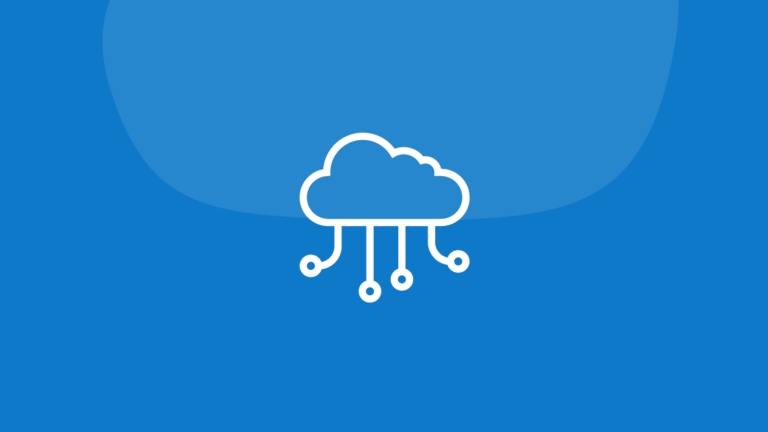Digital transformation has redefined how businesses organise and utilise digital assets. Whether you are dealing with high-resolution images, videos, or marketing materials, the right tools are essential for streamlining workflows and enhancing productivity.
Enter cloud-based digital asset management (DAM) systems – solutions that offer centralised storage, easy access, and seamless collaboration. But with numerous cloud DAM solutions on the market, how do you determine the best fit for your organisation?
This guide provides a comprehensive checklist to help you navigate the selection process and make an informed decision.
Why Choose Cloud-Based Digital Asset Management?
Before diving into the checklist, it is crucial to understand the benefits of cloud-based DAM:
Accessibility
With assets stored in the cloud, teams can access files anytime, anywhere, enabling remote work and global collaboration.
Scalability
Whether your organisation is on a constant growth path or has needs that tend to fluctuate seasonally, digital asset management cloud storage adapts to any capacity without requiring costly hardware upgrades.
Cost-Effectiveness
Unlike on-premises solutions, cloud-based DAM systems can reduce upfront investments in infrastructure and maintenance by offering a pay-as-you-go model.
Streamlined Collaboration
With cloud-based DAM, teams can share, edit, and review files in real-time, thus reducing delays and fostering creativity.
The Checklist: Key Factors to Consider
When researching cloud DAM options, this checklist ensures you cover all critical aspects:
1. Define Your Needs and Goals
Understand your organisation’s unique requirements to pinpoint the solutions you need. Ask yourself:
● How many digital assets does your organisation manage?
Consider the number of files you have right now and how this figure may grow over time.
● What file types do you commonly use – images, videos, documents, or a mix of all?
Different file types may require specialised management features such as video rendering capabilities, image editing, or bulk metadata tagging. You want only features that are relevant to your needs.
● How frequently do your teams access and share these files?
A high turnover of assets may require faster retrieval and more flexible collaboration features.
As an example, a video production company may prioritise high-quality video file storage and faster access speed for their video files. Meanwhile, a legal firm that primarily works with text files might need document-centric features like version control and secure access.
2. Evaluate Storage and Scalability
The volume of assets your company stores will grow over time, which is why it is important for the digital asset management cloud storage solution you select to be able to scale seamlessly for uninterrupted service. Look out for:
● Flexible storage plans
The ability to scale up (or down) as needed without disrupting workflows or incurring unnecessary costs can be invaluable, especially as you experience different growth scenarios. Some systems offer tiered pricing, where you pay for the storage you actually use.
● Clear pricing models
Understand how the pricing works as your storage needs increase. As mentioned above, some providers offer pay-per-use models, while others charge based on the amount of storage or the number of users. Make sure you know the long-term costs.
For instance, a small media agency might start with 500 GB of storage but may require several terabytes for videos and high-resolution images within a few years.
3. Prioritise User Experience (UX)
A user-friendly system encourages faster adoption and smoother operations. Features to consider include:
● Interface design
A clean, intuitive interface helps ensure quick adoption. Look for a cloud DAM system that minimises the learning curve and provides an enjoyable experience for all users, from admins to content creators.
● File uploading and retrieval
Features like drag-and-drop file uploading and bulk file import or export capabilities save valuable time in organising files. Fast search capabilities are crucial – ensure the cloud-based DAM system allows detailed filters (by file type, creation date, etc.) to make file retrieval easy.
● Mobile access
For teams that work remotely or travel frequently, check if the cloud DAM system offers a robust mobile application for quick access on-the-go.
Test out the cloud-based digital asset management software with a demo or trial period to ensure the user interface is intuitive. Make sure team members can quickly get accustomed to the system.
4. Check Security Measures
Given the sensitive nature of many assets stored online, security is non-negotiable for any storage solution. Ask potential cloud DAM providers about:
● Data encryption
Ensure the cloud DAM system uses strong encryption during data transmission and at rest. This helps prevent unauthorised access to sensitive assets.
● Access control
Robust access controls are essential for maintaining data security, especially for businesses with multiple departments or teams.
● Regulatory compliance
Check the data encryption methods and whether the cloud DAM system complies with local and global data protection standards to safeguard against legal issues related to data breaches. Ask if the provider undergoes regular security audits as well and consider having a security expert review their protocols if necessary.
For example, a healthcare company with patient data may need extra layers of encryption and strict permission controls to ensure confidentiality and regulatory compliance.
5. Explore Integration Capabilities
Effortless integration reduces workflow disruptions and enhances efficiency. Remember to ask if your cloud-based DAM system can integrate smoothly with tools your team already uses, such as:
● Content management systems (e.g., WordPress, Drupal)
● Marketing automation platforms (e.g., HubSpot, Marketo)
● Project management tools (e.g., Asana, Trello)
● Design software (e.g., Canva, Figma).
If your tools are more specialised, check if the cloud DAM system offers API access for custom integrations with your internal systems. Ask for integration documentation or conduct a test with your current tools to confirm seamless operation before committing to a solution.
6. Evaluate Search and Metadata Management Capabilities
One of the biggest advantages of a cloud-based digital asset management system is the ability to quickly sort and locate assets, especially as your asset library grows. Check for systems with:
● AI-powered tagging
Automatic tagging and keyword generation can save time and ensure assets are correctly indexed. AI can also suggest tags based on the content of an asset, such as faces in images or objects in videos.
● Customisable metadata
The ability to define custom fields, such as product ID numbers or project names, helps categorise assets in a way that is relevant to your business.
● Advanced search filters
Ensure the cloud DAM system allows you to search by specific attributes like file type, creation date, or keywords. It should also allow you to apply multiple filters to narrow down results.
For instance, a fashion retailer with thousands of product images might benefit from AI-powered tagging to categorise assets by colour, material, or season, enabling fast retrieval when preparing marketing campaigns.
7. Ensure Full Collaboration Features
Today’s modern work environment demands robust collaboration capabilities in any digital solution. Must-have features to look for in your prospective cloud DAM solution include:
● Real-time editing and feedback
Real-time collaboration allows teams to work on the same asset simultaneously, reducing delays and improving efficiency.
● Version control
Version history ensures that team members can track changes to assets over time and easily revert to previous versions if needed.
● Approval workflow
Asset owners should be able to review, comment, and approve files in the cloud DAM solution before they are shared or used publicly.
These features are essential to ensure teams stay aligned, especially in high-paced industries like advertising or media production.
8. Verify Performance and Uptime Guarantees
A reliable cloud DAM system is critical for maintaining workflow continuity. Downtime can disrupt operations. Ensure your provider offers:
● Uptime guarantees
Look for a provider that offers at least 99.9% uptime. Cloud-based DAM systems with high availability ensure you do not experience frequent outages, which can disrupt daily operations.
● Reliable support
A responsive support team can help resolve issues quickly. Consider whether they offer 24/7 support via multiple channels such as chat, email, or phone.
For example, an online publishing company that relies on rapid asset turnaround for client campaigns cannot afford delays from DAM system outages. They may require a minimum uptime guarantee from solution providers as a result.
Start Your Cloud DAM Journey Today!
Choosing the right cloud-based digital asset management system is a critical decision that impacts your organisation’s productivity, creativity, and bottom line. By using this checklist, you can identify the best fit for your needs and ensure your digital assets are managed efficiently and securely.
Remember, whether you are a small business or a large enterprise, the right cloud-based DAM solution will scale with you, integrate seamlessly with your existing operations, and empower your teams to work smarter, not harder. Good luck!

